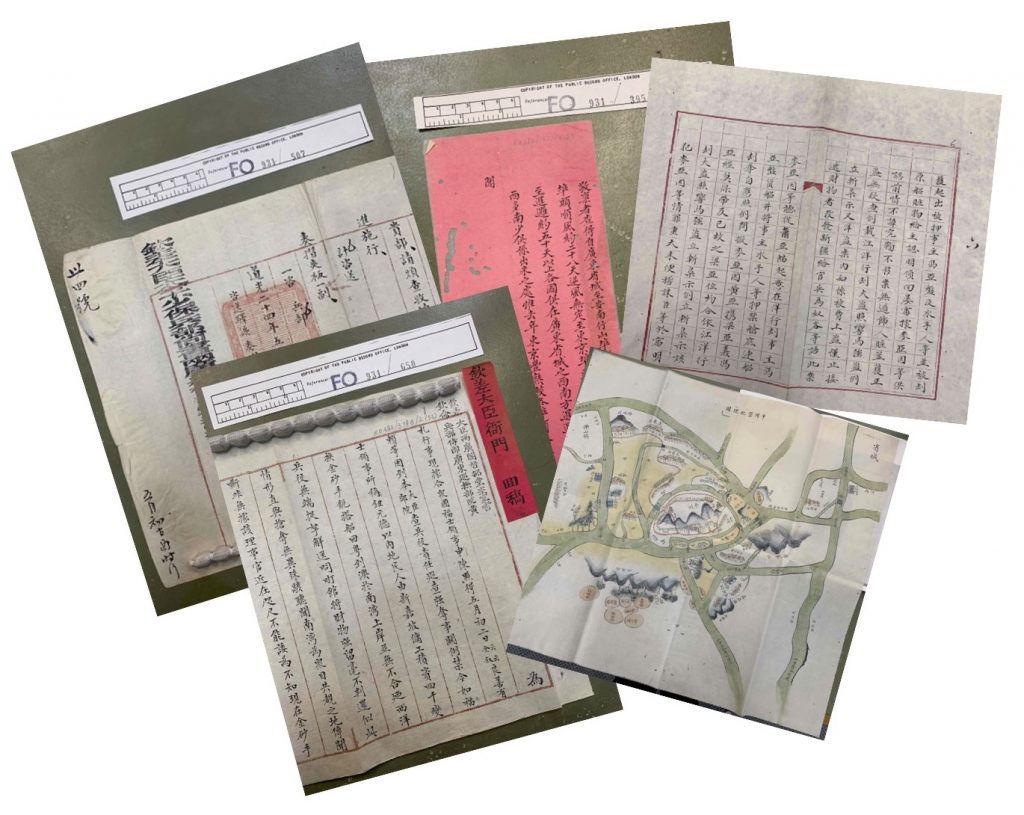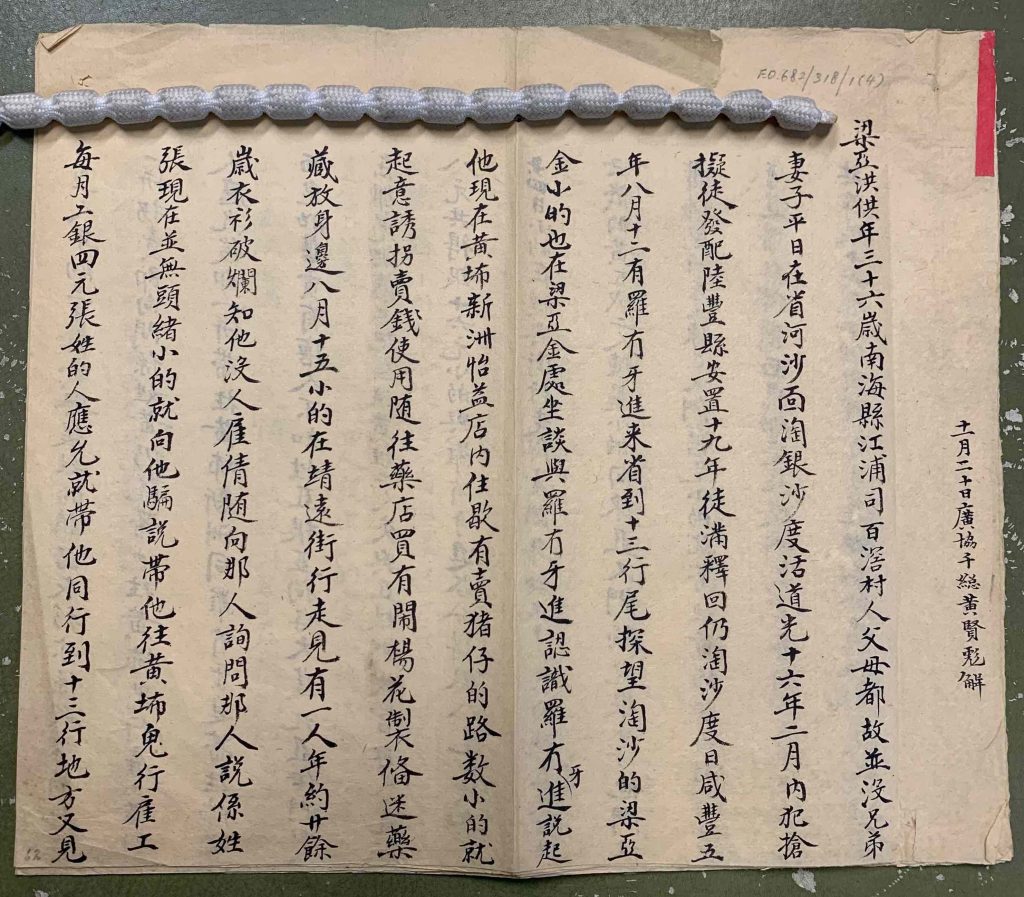
During the so-called Arrow War (aka 2nd Opium War) British forces occupied Canton (Guangdong 廣東) in 1858 and ransacked the Yamen of Governor Yeh. In the process they purloined a large number of documents that eventually found their way into the British National Archives where they are catalogued as the Canton Archives FO 931.
Relevance to Australian history
What does this collection of Qing government documents have to do with Australia? The documents range mostly over the 1840s and 1850s and concern many of the same locations and counties around the Pearl River Delta from where thousands of men traveled to and returned from the gold fields of Victoria, NSW and California. In other words, at the same time that the British based on Hong Kong were waging a war against the Qing Empire, thousands of subjects of that Empire were travelling to Hong Kong to take British and other European ships to goldfields around the Pacific and returning.
Neither the British nor the Qing officials (represented in this war by Governor Yeh based in Canton), seemed to take measures to hinder or even notice this movement. One of the reasons for this seeming indifference on the part of Governor Yeh and his officials is that they were dealing with not only the British (and French) attacks but also the widespread Taiping Rebellion in provinces to the north as well as numerous local rebellions within the two provinces Governor Yeh was responsible for – Guangdong and Guangxi.
In other words – people went off to, and returned from, the Pacific goldfields before, during and after the Taiping and Red Turban rebellions and the Arrow War. They did so from certain Pearl River Delta counties only while other counties, equally or more affected by these same internal disturbances seemingly sent no one or if so not until a later period.
The question is: How much can the goldfields rush undertaken people from these specific Pearl River Delta counties be attributed to the rebellions and wars? Perhaps not as much as to the newly established access to Hong Kong and its European shipping coupled with the long-term practice of migratory income earning.
The Documents
These Qing government records therefore deal with pirates, rebels, and numerous other incidents in the late 1840s and well into the 1850s up until the time the documents were seized and Governor Yeh was captured. This material has been used by several scholars of the Arrow War but never for the purpose of eliciting the background of those villages and countries from which many thousands of people left for (and returned) the goldfields of the Pacific.
Examples include:
Hsiangshan report 1857 (FO 931/368)
Dispute over passengers to San Francisco 1853 (FO 931/942)
Memorial on Hsiangshan pirates 1849 (FO 931/1018)
Enping Hakka-Penti feud 1856 (FO 931/346)
Plans for attack on Red Turbans 1850s (FO 931/1104)
Report on British in HK 1850s (FO 931/1128)
Hsiangshan Red Turbans 1854 (FO 931/1504)
Fatshan Red Turbans 1854 (FO 931/1508)
Coolie Trade 1856 (FO 931/1864)
Translations
While summaries have been made of the general subjects of these documents, no complete translations have been made. Fluent readers of the Literary Chinese used in these documents are now difficult to find and anyone able and willing to try their hand at translation are welcome to email:
Dr Michael Williams: michaelstor@yahoo.com
Warning to would-be translators: These documents are of course written in traditional characters and largely in Classical or Literary Chinese, though sometimes with a mix of vernacular also. They also contain references to Qing offical titles that are relatively obscure nowadays. Translation of such material is exciting but a challenge not to be taken lightly.
Example 1: Toothless Luo and the Coolie Trade
A great first translation made possible by the generosity and skill of Dr Lily Lee. [Click on the document to get the translation.]


